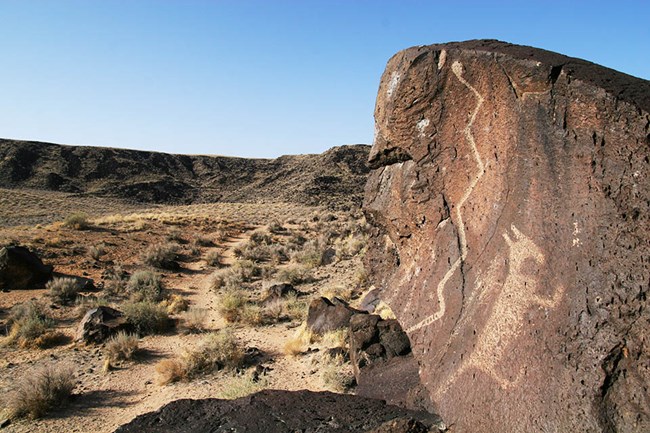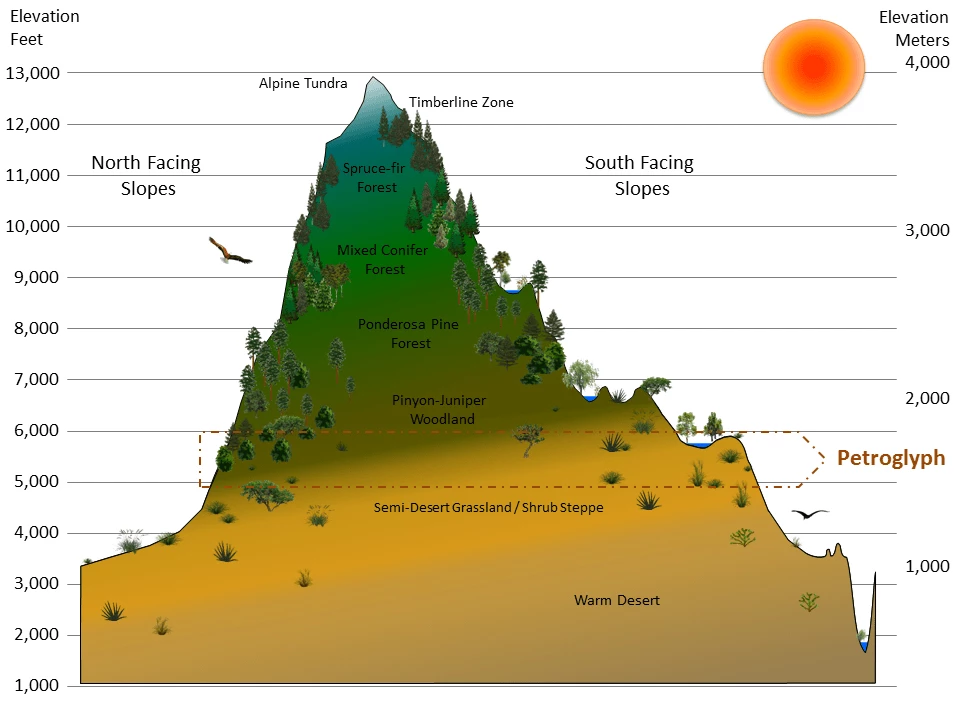
NPS
Petroglyph National Monument is comprised of three units and encompasses 7200 acres (2915 ha) within the city of Albuquerque in central New Mexico. The monument is jointly owned and managed by the National Park Service, the State of New Mexico, and the City of Albuquerque. It was established in 1990 to protect cultural and natural resources, including a large concentration of petroglyphs and five volcanic cones.
Petroglyph NM is located in the transition zone between Great Plains, Great Basin, and Chihuahuan Desert grasslands. Nine vegetation communities have been identified in the monument, with grasslands and shrublands dominant. Six species of amphibians, 55 species of birds, 26 species of mammals, 24 species of reptiles, and over 350 species of invertebrates have been documented in the monument. Surface water resources in the monument include several ephemeral streams and arroyos, including one intermittent stream that passes through two of Petroglyph's units.
Select a Park:
Select a Species Category (optional):
Visit NPSpecies for more comprehensive information and advanced search capability. Have a suggestion or comment on this list? Let us know.
Life Zones
Petroglyph NM ranges in elevation from 4,982 to 6,029 feet (1,519–1,838 m) and spans the Semi-Desert Grassland/Shrub Steppe and Pinyon-Juniper Woodland life zones. The monument experiences an average annual precipitation of 8.6 inches (219 mm).

Climate Summary Chart
Charts are an effective way to summarize and graphically represent climate variables. The following chart is based on the diagrams developed for vegetation studies by Walter and Lieth in 1967. Visit our climate page for more information.

Reports & Publications
Inventories are point-in-time surveys that help us learn about the resources in our parks. Information obtained through the Southern Colorado Plateau Network’s inventories of park resources helped to establish a base level of data, which has served as a starting point for our natural resource monitoring.
Source: NPS DataStore Saved Search 3515 (results presented are a subset). To search for additional information, visit the NPS DataStore.
Source: NPS DataStore Saved Search 3471 (results presented are a subset). To search for additional information, visit the NPS DataStore.
Source: NPS DataStore Saved Search 3280 (results presented are a subset). To search for additional information, visit the NPS DataStore.
Last updated: October 21, 2022
